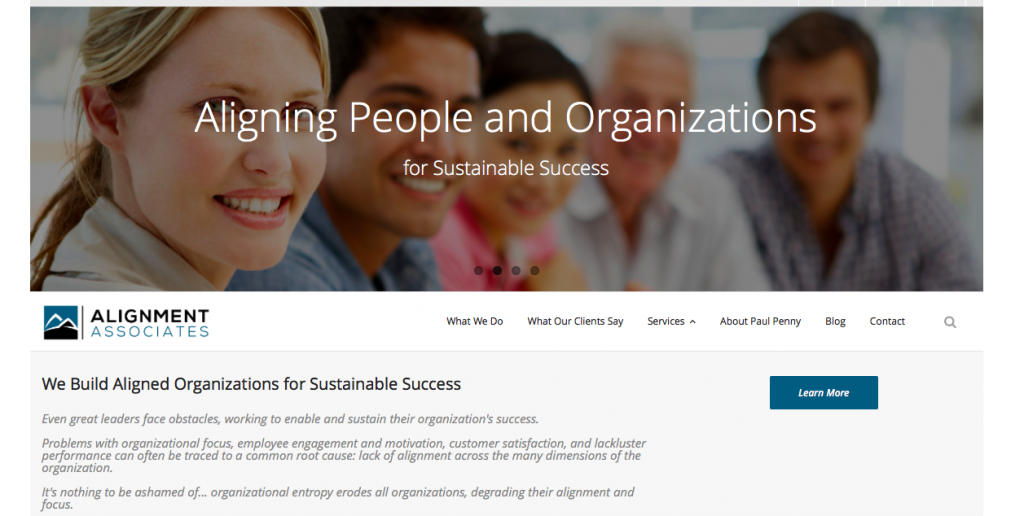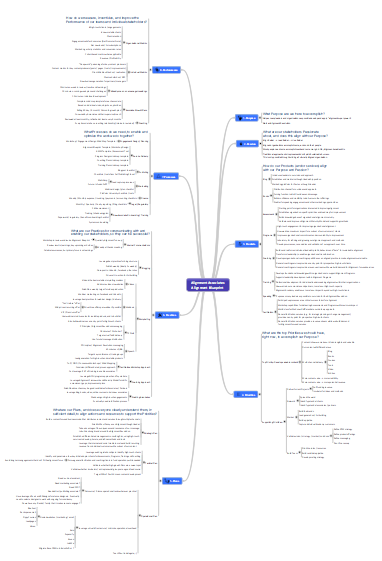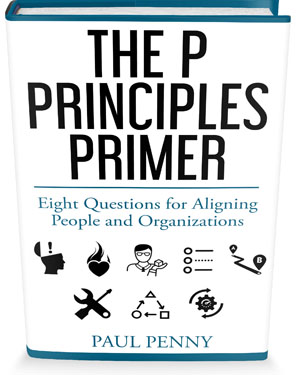Want to understand why I do this, in less than 4 minutes? Watch this.
The masters in the art of living make little distinction between their work and their play, their labor and their leisure, their minds and their bodies, their education and their recreation, their love and their religion. They hardly know which is which. They simply pursue their vision of excellence in whatever they do, leaving others to decide whether they are working or playing. To them they are always doing both.

I put together a couple of “word cloud” graphics for a project, to communicate the characteristics of unaligned vs. aligned organizations. I think they’re pretty useful… and decided to post them here!
Entrepreneur Disease
It's an affliction you want
by
At 3AM today, the diagnosis was official. I lay awake in bed, after 4 hours of sleep, and I realized my brain had clicked into overdrive, and I wasn’t going back to sleep. Not because of stress or anxiety… but because of optimism and excitement and a thirst to make an impact. Yes… I have Entrepreneur Disease.

Announcing Alignment Associates!
Building Aligned Organizations for Sustainable Success
by
I apologize. I’ve been delinquent in posting for the past few weeks. But (like always, right?) I have a very good excuse. I’ve been working non-stop to launch my new consulting firm, Alignment Associates.

Over the last two years, I’ve been thinking deeply about how to best apply my passion and my talents, to have the most impact. Certainly I can have an impact through this blog, and my writing, and through my facilitation work. But as I wrote here about alignment, and distilled some of my thoughts in The P Principles Primer, I had a bit of an epiphany. I realized there’s a huge void in management consulting and leadership development around this topic. And there are millions of real people, leaders and their organizations, struggling every day because of it. I believe the majority of improvement initiatives are focusing on symptoms of poor alignment, instead of addressing the root causes. And I believe this is the primary reason most improvement initiatives don’t yield the sustainable success we need as leaders.
So for the last few months, I’ve been synthesizing my thoughts around this. How could I help organizations overcome these issues? What would the “right” process be? What tools would we need? How would we overcome the limitations of past approaches? How do we make real change happen, and how do we make it sustainable?
This short (4 minute) video applies the P Principles to my own work; it explains Alignment Associates’ Purpose, Passion, and Products in the form of a Vision Story. Once I understood how to tell this story, everything else got much, much clearer, and is happening very fast.
Alignment Associates will focus on services that help organizations build maximum leverage to improve alignment:
- Alignment Blueprints™, to document and clearly communicate an organization’s alignment current state and desired future state, in the context of the P Principles™
- Alignment Assessments, to objectively evaluate an organization’s Alignment Maturity (using our Alignment Maturity Model™) and understand impactful, attainable, step-wise improvements
- Alignment Programs, utilizing empowered teams and facilitated workshops, to identify and plan the highest-leverage improvements, and implement them within the organization
- Alignment Training and Coaching, to help leadership teams grow their understanding of alignment and build their own aligned leadership capabilities
I’m “eating my own dog food” by applying the P Principles framework in designing and developing this business from the ground up. After developing the Vision Story captured in the video, one of the next steps was building my own Alignment Blueprint, to capture all eight dimensions on a single sheet of paper:

 Yeah, I know you can’t read the details… I can’t give away ALL my “secrets.” <wink>
Yeah, I know you can’t read the details… I can’t give away ALL my “secrets.” <wink>
I have a 24″x36″ hardcopy of this posted in my office, to help me maintain clarity on everything I do.
It’s taken a ton of focused time and energy to build the tools and methods to do this. They didn’t “just happen.” They represent what I’ve learned and developed working with hundreds of clients, and in my own firms, over the past 30 years. And I’m excited about continuing to learn and develop this body of knowledge and capabilities, as we apply this approach with more clients. I expect to build a team with broad reach to take these services to scale, to help as many organizations as possible develop their “alignment superpowers.”
It’s an exciting time to be focused on organizational alignment. I wake up early every day with an energy level I haven’t felt in years (maybe decades). I know I’m doing deeply important work, that has the power to improve the performance of many organizations, and the lives of millions of workers and leaders. I’d love to help your organization join the alignment revolution.
Aligning Teams with the 5 Whys
It's not just for root cause analysis
by
Sakichi Toyoda, the founder of Toyota Industries, is credited with developing the “5 Whys” technique of analysis. Toyoda observed that, through asking “why?” iteratively, we are able to get past the superficial symptoms of an issue and dig deep into the fundamental cause. While the 5 Whys is used extensively in process improvement disciplines such as Lean and Six Sigma, it is also a powerful technique for building understanding, achieving consensus, and aligning teams.

Sustaining Success through Alignment
Addressing the challenges of Growth and Change
by
The P Principles Primer: Eight Questions for Aligning People and Organizations
I’m delighted to announce that my new eBook is DONE!!! And available FREE!!!
It’s a very quick read, that introduces my “P Principles” framework for organizational alignment, and provides actionable tips for improving alignment in your organization. I recommend this for anyone in a management or leadership position… or for anyone who thinks your management could do things better. 😉
You can read more about it, and get your free copy, here.

Are your management practices in alignment?
Communicating to maintain alignment and performance
by

But we had a PLAN!!!
(and it wasn't enough)
by
We’ve all heard (or said) this at some point in our careers… probably many times. A project, a program, or an entire business has gone off the rails. While this happens frequently due to a total lack of planning, that wasn’t the case here. Instead, you and your team put time and effort into formulating a plan to achieve your goal. But, somehow, things broke down during execution. But why? Perhaps your plans, however complete, were not fully aligned.


